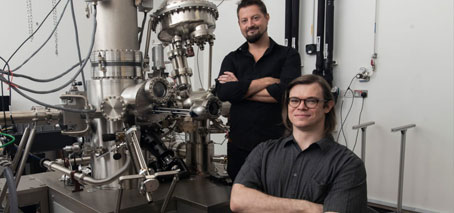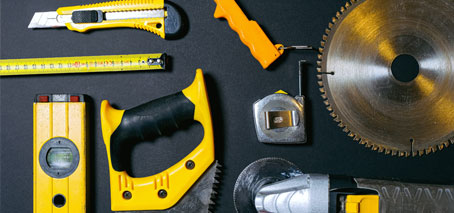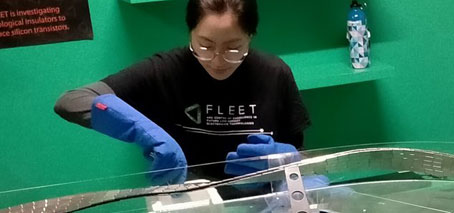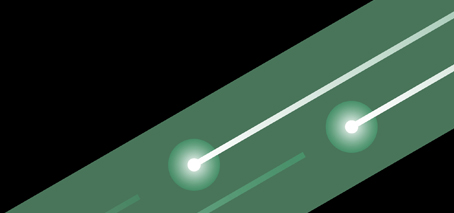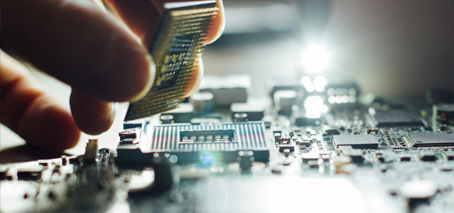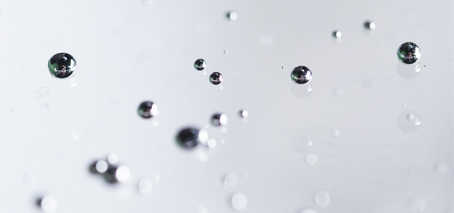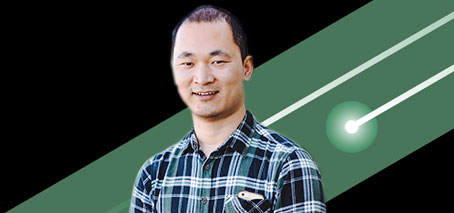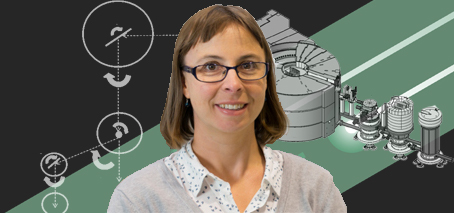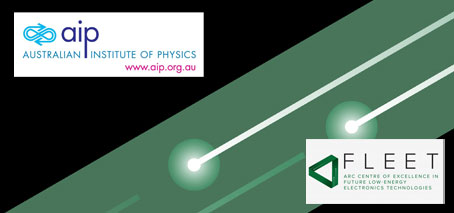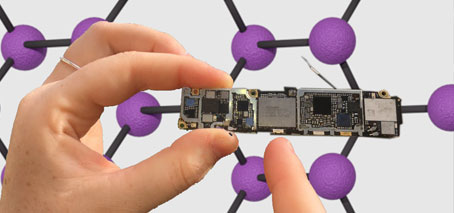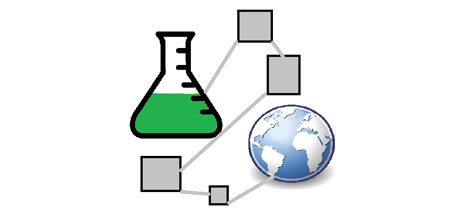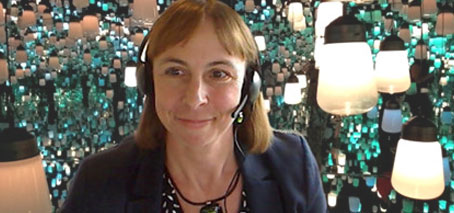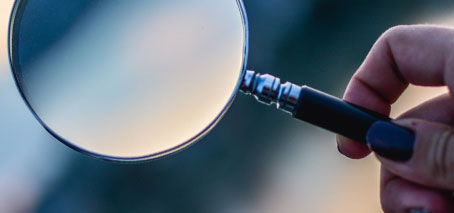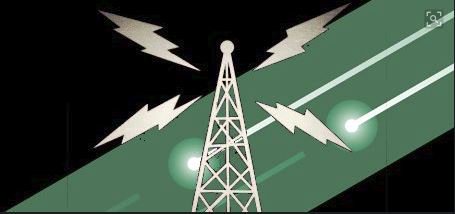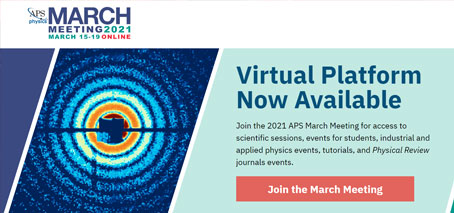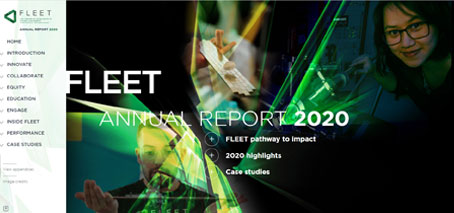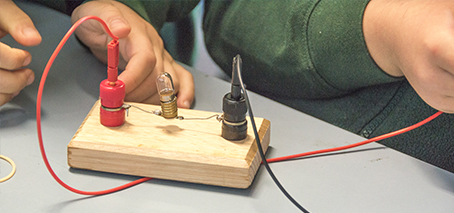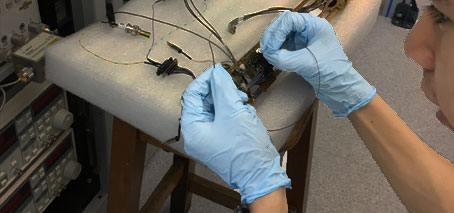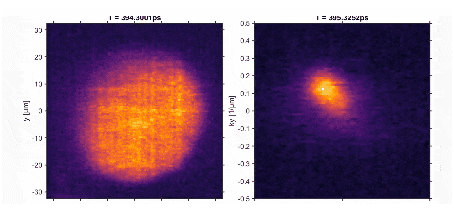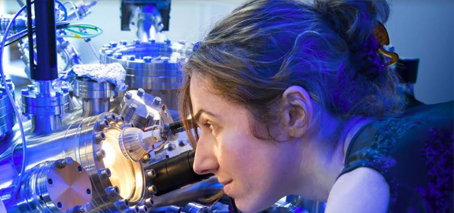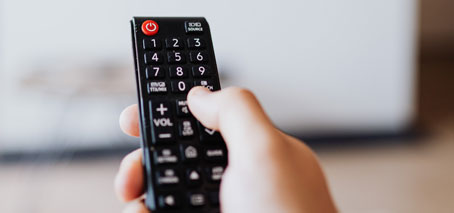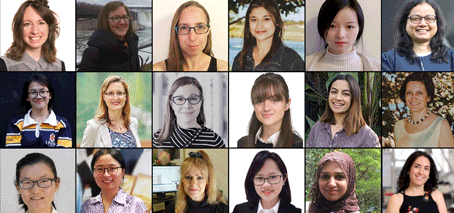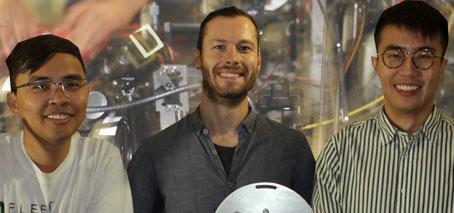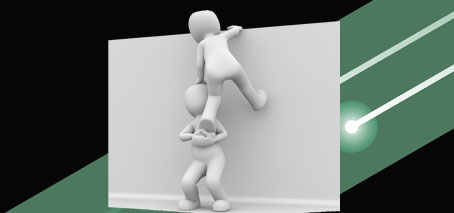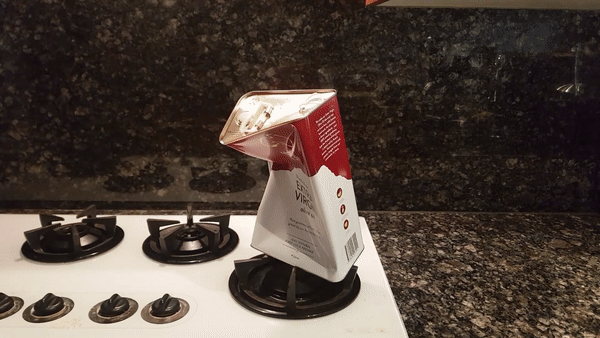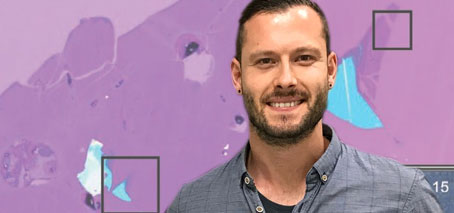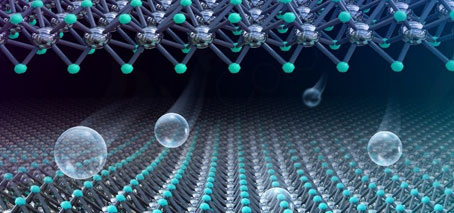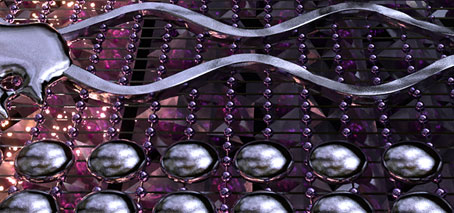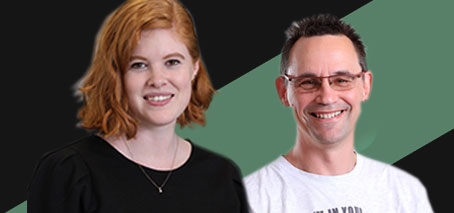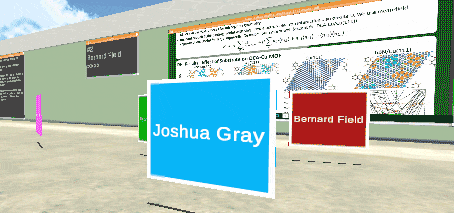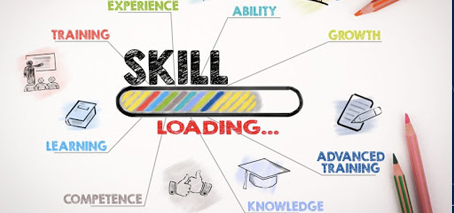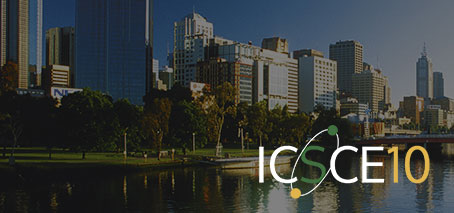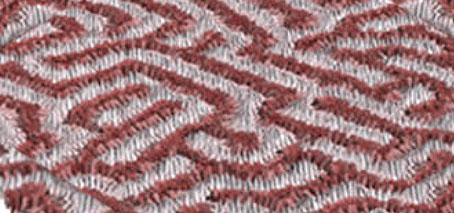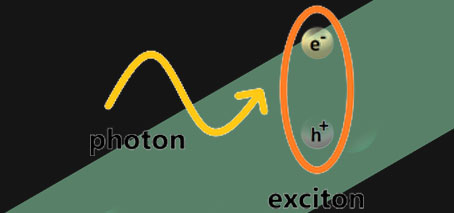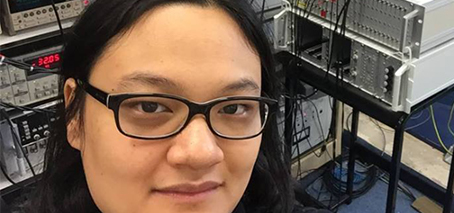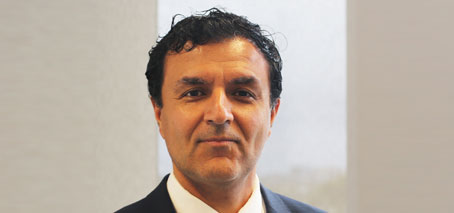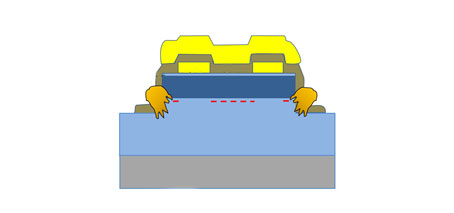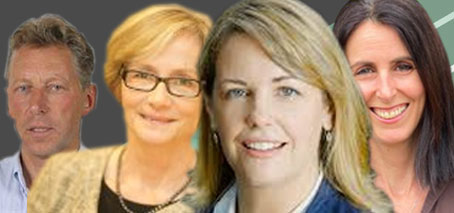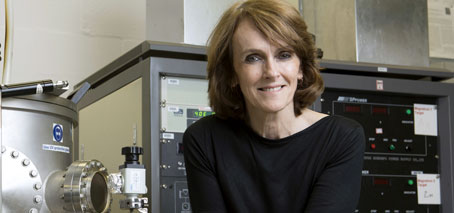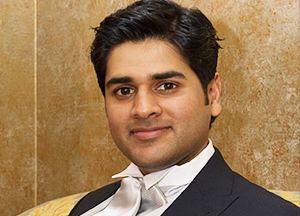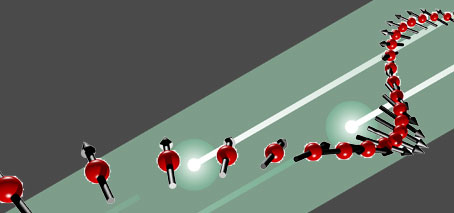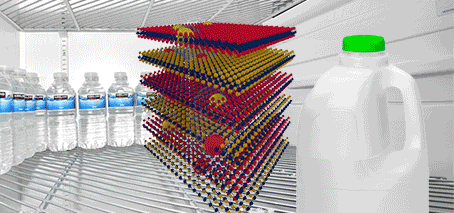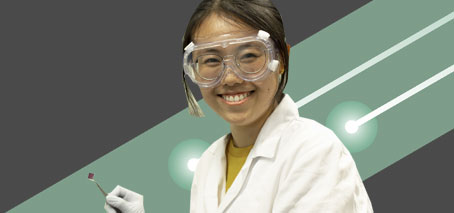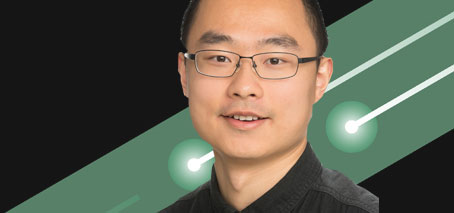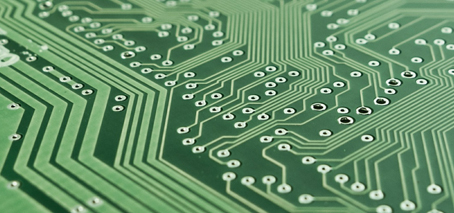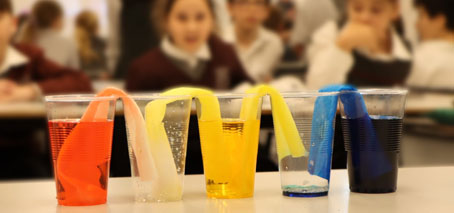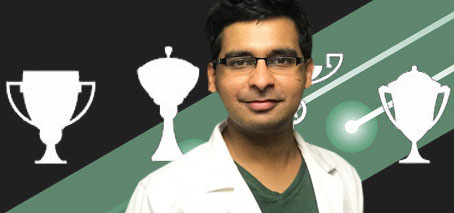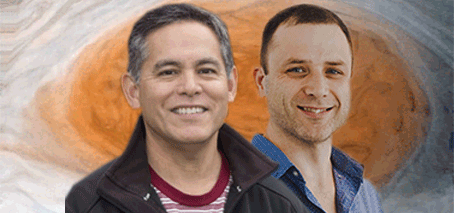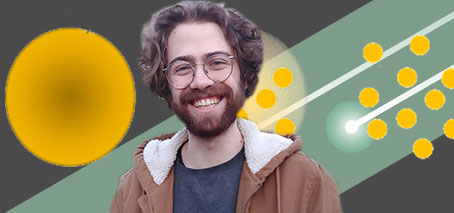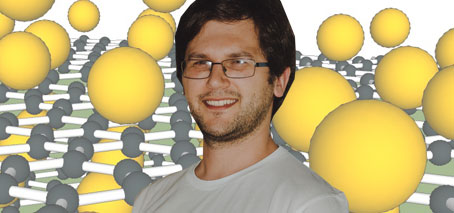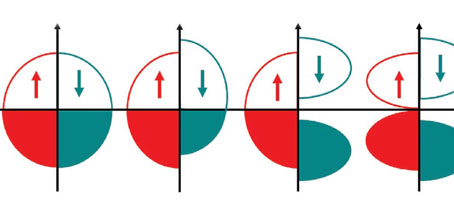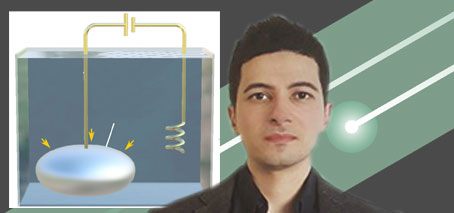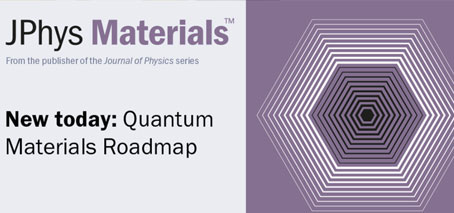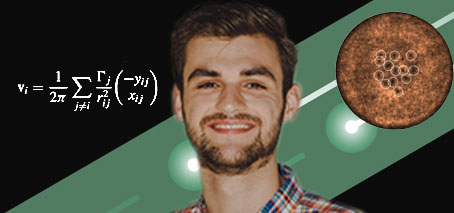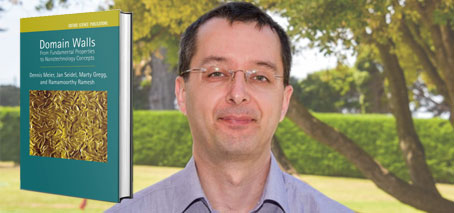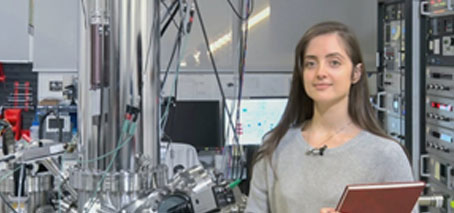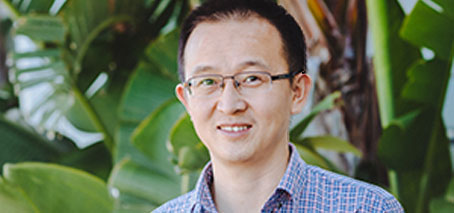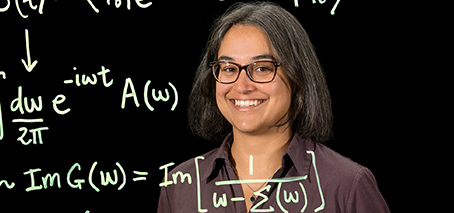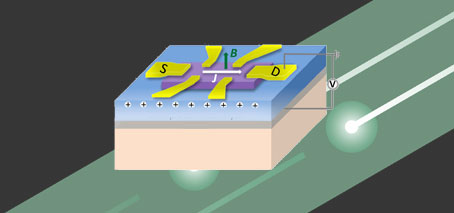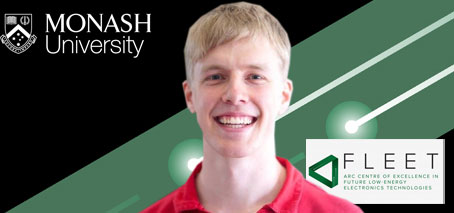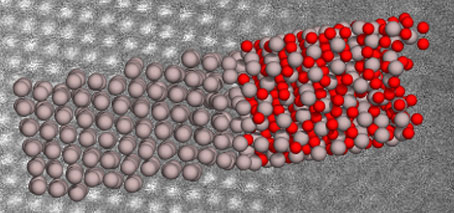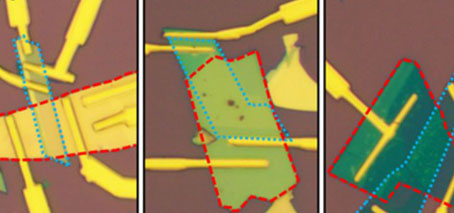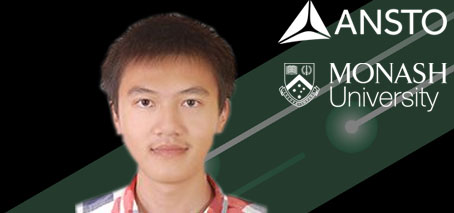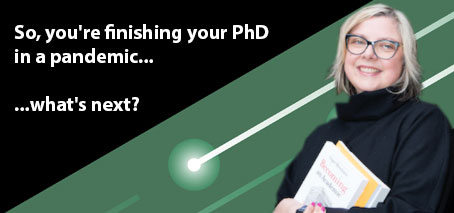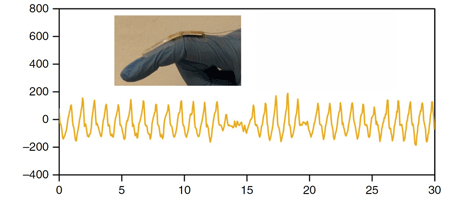An exotic class of topological quantum materials has been reviewed by an international team of physicists, led by A/Prof Bent Weber at Nanyang Technological University (NTU – Singapore). Atomically-thin quantum spin Hall insulators, whose electronic states are protected by topology, promise applications in quantum information processing. Quantum spin Hall insulators are a class of two-dimensional (2D) topological states of matter …
Tools of the Trade: Eli Estrecho explains laser trapping for Nature series
A ‘pumped’ laser can be used to trap and manipulate an exciton-polariton condensate. These quantum fluids, which can behave as a resistanceless superfluid in certain conditions, need continuous replenishing, with the pumping laser supplying both a reservoir of electrons and confining force. “The pumping laser can trap the quantum fluid as the particles are repelled from the pump region, similarly …
Engaging public conversations at Melbourne Knowledge Week
Melbourne Knowledge Week (26 April-2 May 2021) was an opportunity for FLEET to engage with over 350 members of the public about the exciting future of computing, and the vital role of energy-efficient electronics in that future. FLEET’s sustainable computing booth ran for the full week at the festival hub, with hands-on science demonstrations linked to materials used in FLEET …
FLEET reps at Science meets Parliament
FLEET had four researchers at STA’s annual Science Meets Parliament, which was fully online in 2021, other than regional gala dinners. Participants heard from a diverse mix of Australia’s top scientists, including Chief Scientist Cathy Foley and Chief Defence Scientist Tanya Monro. FLEET’s four ECR delegates—Eli Estrecho (ANU), Peggy (Qi) Zhang (UNSW), Gary Beane (Monash) and Harley Scammell (UNSW)—were introduced …
Maintaining international links in the absence of international travel
US–Australian transpacific condensed-matter talks The temporary halt in international visits that traditionally spark and fuel research collaborations in 2020 pushed FLEET to find new ways to connect. Some positives have surfaced amid the negative impacts of Covid-19 travel bans on science collaboration, including the expansion in videoconferencing allowing researchers from geographically isolated regions to connect. Together with Centre partners at …
Engaging with industry in 2020
FLEET is building links with partners interested in novel electronic devices and systems working towards the overarching goal of creating pathways to translations of research outcomes. Progress towards this important goal in 2020 included: Adding topological transistors to the Institute of Electrical and Electronics Engineers (IEEE) International Roadmap for Devices and Systems Lodging two provisional patents: topological switching (Fuhrer Monash and …
Topological-switching patents demonstrate FLEET’s dominance in field
Two patent applications, one filed in 2020, reinforce FLEET’s position as a world leader in topological transistors. The patents cover work in the ‘switching’ of topological material, to facilitate creation of a functioning topological transistor – a proposed new generation of ultra-low energy electronic devices. Their world-first success was the switching of a material via application of an electric-field between …
Liquid metals spin-off launched
The Liquid-metals spin-off company Liquid Metal Plus (LM+) initiated in 2020 with FLEET investigators Kourosh Kalantar-Zadeh (UNSW) and Dr Torben Daeneke (RMIT), together with Dorna Esrafilzadeh (UNSW), was launched in April 2021. Pushing print on flexible touchscreens Climate rewind: turning CO2 back into coal The company has two areas of focus, with the unifying theme being application of liquid-metal technologies …
Explainer: Linkage funding for topological-thermoelectricity
A team led by FLEET CI Prof Xiaolin Wang (University of Wollongong) has won a linkage project for topological materials based thermoelectricity. Thermoelectricity can directly convert heat to electrical energy or vice-versa. It plays an important role in renewable and sustainable energy by harvesting waste heat, which is widely available in human body, computer chips, sunlight and steel industry. Thermoelectric …
Thermoelectric devices convert waste heat from industry into viable new energy source
New research supports development of thermoelectric devices to convert waste heat from industry into a viable new energy source Australian industries could benefit from being able to harness the heat by-products from operations Development of advanced materials can sustainably convert waste heat into useful forms of energy to benefit Australia. The work will be undertaken as part of an Australian …
Building future science leaders in 2020
FLEET ensures that our young researchers are prepared for future success – wherever their career takes them. The Centre currently supports 64 higher degree by research (HDR) students and 45 postdoctoral researchers with another 21 research affiliates working on FLEET projects and invited to Centre training, workshops and events. FLEET connects its researchers with internal and international networks, for example, …
Monthly talks bring Australian research to the physics community
A series of talks spotlights leading Australian physics research for the physics community. Co-organised by FLEET and the Australian Institute of Physics, the series throws the spotlight on a different Australian Research Council Centre of Excellence each month, with AIP members and others in the physics community dialing in over zoom to hear about leading Australian research. To date, over …
Topological materials beat Boltzmann’s tyranny: Surpassing lower limit on computing energy consumption
Topological insulators can reduce transistor switching energy by a factor of four Defeating Boltzman’s tyranny, which puts a lower limit on operating voltage New FLEET research confirms the potential for topological materials to substantially reduce the energy consumed by computing. The collaboration of FLEET researchers from University of Wollongong, Monash University and UNSW have shown in a theoretical study that …
Skilling up our people in 2020: research impact and industry engagement
—Who would be interested in my research? Who would benefit from it the most? —How can I pursue high-impact research? —How does research translation work? —If I’ve developed some cool intellectual property, where would I start with industry engagement? —How do I effectively ‘sell’ the value of my research in an award application/grant/job interview? While researchers are typically familiar with …
FLEET heading to Melbourne Knowledge Week
Melbourne Knowledge Week (26 April-2 May 2021) will be an opportunity for FLEET to engage with the public about the exciting future of computing, and the vital role of energy-efficient electronics in that future. FLEET’s sustainable computing booth will run for the full week at the festival hub, with hands-on science demonstrations linked to materials used in FLEET research, such …
Online format is easy, enjoyable engaging: SMP 2021
This years’ Science Meets Parliament 2021 transitioned to a mostly virtual event and I must admit, I enjoyed this format thoroughly. The format involved shorter sessions scheduled throughout March, which made it much easier to attend amongst other work and family commitments. This extended program was in conjunction with 2 full days of focused sessions with seminars on topics such …
Tools of the Trade: Zengji Yue explains ion intercalation for new Nature series
Inserting ions into, or between, atomically-thin materials can be used to alter their properties in a finely-controlled fashion. For example, graphene’s properties can be fine-tuned by injection of another material (a process known as ‘intercalation’) either underneath the graphene, or between two graphene sheets. (See article.) “Intercalating ions into layered materials increases the spacing and decreases the coupling between the …
A new, positive approach could be the key to next-generation, transparent electronics
A new study, out this week, could pave the way to revolutionary, transparent electronics. Such see-through devices could potentially be integrated in glass, in flexible displays and in smart contact lenses, bringing to life futuristic devices that seem like the product of science fiction. For several decades, researchers have sought a new class of electronics based on semiconducting oxides, whose …
Qubits comprised of holes could be the trick to build faster, larger quantum computers
New study indicates holes the solution to operational speed/coherence trade-off, potential scaling up of qubits to a mini-quantum computer. Quantum computers are predicted to be much more powerful and functional than today’s ‘classical’ computers. One way to make a quantum bit is to use the ‘spin’ of an electron, which can point either up or down. To make quantum computers …
FLEET PhDs on the Melbourne airways
Three FLEET PhD students this month featured on popular radio science show Einstein a go-go, on the show’s regular “20 PhDs in 20 minutes” segment. In this format, student and host each get a minute, covering the student’s entire project in just two minutes combined. (Perfect practice for the famous ‘elevator pitch’.) The three FLEET presenters were Alex Nguyen (Monash), Matt …
Smartphones vs fridges #fakenews
Or, why we dropped a super-persuasive fact. It’s a much-quoted ‘fact’ that your smartphone uses more electricity than your fridge. And it’s very persuasive, particularly if you work (as we do) in the field of low-energy electronics. The entire field is predicated on the fact that computing/electronics use an unsustainable amount of electricity. And because most people don’t think of …
2020: a challenging year for outreach!
In 2019, after a remarkable achievement in reaching over 10,000 students, FLEET voluntarily raised its outreach target from 200 students to 2000 students, 50 teachers to 75 teachers and 2000 public members to 5000 public members. And then Covid happened … However, despite the unique challenges that Covid imposed on face-to-face outreach, cancelling public events and banning in-class or in-lab …
FLEET represents at APS March
FLEET is dialling in to the online APS March Meeting from afar this year! Here’s a list of talks given by FLEET members and affiliates throughout the week to check out (if you have registered for the conference, catch-up links are provided on each page). Monday 15 March Ali Yazdani (Princeton University, FLEET Advisory Committee) Correlation and topology in magic …
FLEET’s 2020 Annual Report.
We’re pleased to present hot-off-the-press FLEET ‘s 2020 Annual Report, detailing an extraordinary level of scientific output, as well as FLEET’s response to COVID-19. It was quite a year! The new online format is much easier to navigate and share with others (just share the relevant page’s URL), as well as being a bit gentler on the planet. Thanks everyone …
Engaging senior school students at JMSS in 2020
In 2020, FLEET continued the Year 10 ‘Future electronics’ course launched the year before in partnership with John Monash Science School (JMSS), Victoria. As well as covering the history of semiconductors, Moore’s Law and computing, the course introduces quantum physics at an intuitive level (with minimal maths) and expands on this fundamental understanding to explain complex, useful quantum states such …
‘Target identified’: teaching a machine how to identify imperfections in 2D materials
Applying machine learning to automated characterisation of atomically-thin materials Just as James Cameron’s Terminator-800 was able to discriminate between “clothes, boots, and a motorcycle”, machine-learning could identify different areas of interest on 2D materials. The simple, automated optical identification of fundamentally different physical areas on these materials (eg, areas displaying doping, strain, and electronic disorder) could significantly accelerate the science …
Working with other science organisations in 2020
Although 2020 posed unique challenges to in-person collaborations, FLEET proactively sought out opportunities to partner with other science organisations to further the reach of Centre-relevant science, advance equity issues and develop future leaders, for example: Working with the Australian Institute of Physics (AIP) to instigate and co-host a monthly series of talks spotlighting physics research at six different Australian Research …
Summer students introduce undergrads to quantum device study at UNSW
Alex Hamilton’s QED group at UNSW recently hosted four summer students, working alongside FLEET’s researchers on nanofabrication and characterisation projects connected to the QED group’s key research mission. Over the course of their six-week placement, students pursued individual projects within the groups research project, developing individual skills in device fabrication and experimental process. The UNSW Physics Quantum Electronic Devices group …
Sloshing quantum fluids of light and matter to probe superfluidity
The ‘sloshing’ of a quantum fluid comprised of light and matter reveals superfluid properties. An Australian-led team of physicists have successfully created sloshing quantum liquids in a ‘bucket’ formed by containment lasers. “These quantum fluids are expected to be as wavy as the oceans, but catching clear pictures of the waves is an experimental challenge,” says lead author Dr Eliezer …
Spotlighting ARC physics in 2020
FLEET pushed out the boundary of online talks, collaborating with the Australian Institute of Physics (AIP) to co-host a series of monthly public seminars highlighting Australian physics research. The new series throws the spotlight on a different Australian Research Council Centre of Excellence each month, with AIP members and others in the physics community joining over Zoom to hear about …
Harnessing socially-distant molecular interactions for future computing
Could long-distance interactions between individual molecules forge a new way to compute? Interactions between individual molecules on a metal surface extend for surprisingly large distances – up to several nanometers. A new study, just published, of the changing shape of electronic states induced by these interactions, has potential future application in the use of molecules as individually addressable units. For …
Remote outreach that’s also hands-on
FLEET scientists seeking new, creative ways to do science outreach found a silver lining in Covid-19 restrictions: they actually improved the experience for students. A team of FLEET-UNSW PhDs and early-career researchers (ECRs) was able to bridge 2020’s Covid restrictions to safely engage a classroom of students with virtual, but hands-on science. Led by PhD student Vivasha Govinden and node …
‘Pivoting’ to virtual: online lab tours in 2020
In the absence of in-house lab tours to introduce school students to working labs and researchers, in 2020 FLEET developed and distributed a series of ‘virtual lab tours’, of varying levels of interactivity: Show-and-tell lab tour via webcam for John Monash Science School (JMSS) students at Clayton of FLEET laboratories at UNSW in Sydney (materials science), and Swinburne University in …
Celebrating women in STEM
Why would we need a special day to celebrate women in science? February 11th marks the International Day of Women and Girls in Science, promoted by the United Nations. According to the UN, less than 30% of the researchers worldwide are women. This means that there’s twice as many men as there are women! In fields like Mathematics, Physics and …
Scientists create armour for fragile quantum technology
An international team of scientists has invented the equivalent of body armour for extremely fragile quantum systems, which will make them robust enough to be used as the basis for a new generation of low-energy electronics. The scientists applied the armour by gently squashing droplets of liquid metal gallium onto the materials, coating them with gallium oxide. Protection is crucial …
FLEET mentoring in 2020
FLEET provides mentoring to personnel across all career stages (such as PhD students and early- and mid-career researchers) covering areas such as induction, career advancement and planning, equity and diversity, professional development, entrepreneurship and research leadership skills. Two mentoring models are offered: Individual, goal-oriented mentoring, where members are individually matched to a mentor within FLEET based on their needs, for …
Members’ homescience
While FLEET’s face-to-face outreach efforts were necessarily limited in 2020, the Centre innovated new ways to keep our members involved in science outreach. Several FLEET members took advantage of lockdown to generate homescience experiments at home, with a seeming bias towards experiments that involved blowing something up or setting something on fire. (An insight into lockdown frustration perhaps, or just …
Encasing fragile 2D semiconductors in ultrathin glass: A route towards compact ultra-low energy electronics
Encasing fragile 2D materials in ultrathin gallium-oxide glass could allow integration into functional low-energy devices Two-dimensional (2D) semiconductors have emerged during the past decade as extremely promising for future electronic and optoelectronic devices. However, to unlock the significant potential of these fragile materials, we must first find a way to protect them in functional devices, while maintaining their key electronic …
Nano-thin piezoelectrics advance self-powered electronics
A new type of ultra-efficient, nano-thin material could advance self-powered electronics, wearable technologies and even deliver pacemakers powered by heart beats. The flexible and printable piezoelectric material, which can convert mechanical pressure into electrical energy, has been developed by an Australian research team led by RMIT. It is 100,000 times thinner than a human hair and 800% more efficient than …
Zebra stripes, leopard spots and other patterns on the skin of frozen metal alloys that defy conventional metallurgy
“Stripy zebra, spotty leopard, …”. Kids never become bored pinpointing animals based on their unique body patterns. While it is fascinating that living creatures develop distinct patterns on their skin, what may be even more mysterious is their striking similarity to the skin of frozen liquid metals. Pattern formation is a classic example of one of nature’s wonders that scientists …
One-dimensional quantum nanowires fertile ground for Majorana zero modes
Important step towards fault-tolerant quantum computing Why is studying spin properties of one-dimensional quantum nanowires important? Quantum nanowires–which have length but no width or height–provide a unique environment for the formation and detection of a quasiparticle known as a Majorana zero mode. A new UNSW-led study overcomes previous difficulty detecting the Majorana zero mode, and produces a significant improvement in …
Pushing virtual meeting technology: FLEET’s online annual workshop 2020
With strict Covid-19 restrictions across much of FLEET’s Australian nodes, and eliminating international visitors, the decision was made to hold the Centre’s 2020 annual workshop entirely online. By this time, Centre decision-makers were well aware of ‘Zoom fatigue’. People spending many hours on Zoom each week were finding interacting only via computer screen to be dis-engaging, and surprisingly exhausting. In …
Putting FLEET science on the map
Topological transistors added to IEEE International Roadmap for Devices and Systems The remarkable advances in semiconductor technology (guided by the so-called ‘Moore’s Law’ over some six or seven decades) don’t just happen. They are steered through an international, pre-competitive industry roadmap. The IEEE International Roadmap for Devices and Systems ‘IRDS’ is the latest semiconductor roadmap, guiding development of more conventional …
Hosting FLEET research seminars in 2020
FLEET turbo-charged our existing Centre-wide seminar series in 2020, with 10 research seminars – a significant increase from only four seminars in 2019. Very aware of the importance of Centre cohesion without inter-state travel and with many universities in lockdown, FLEET threw extra resources into monthly Zoom seminars, often overlapping with expanded ‘journal club’ meetings involving multiple interstate visitors. Two …
Hosting scientific meetings in 2020 (ICSCE10)
In January 2020 FLEET brought the 10th International Conference on Spontaneous Coherence in Excitonic Systems (ICSCE10) to Australia for the first time. Continuing this 15-year tradition from the global scientific community interested in various quantum phenomena, ICSCE10 was hosted at the Arts Centre Melbourne amidst smoke storms resulting from one of the worst bushfire seasons in Australia’s history. ICSCE10 brought …
Seeking answers in ferroelectric patterning
Why do some ferroelectric materials display bubble-shaped patterning, while others display complex, labyrinthine patterns? A FLEET study finds the answer to the changing patterns in ferroelectric films lies in non-equilibrium dynamics, with topological defects driving subsequent evolution. Ferroelectric materials can be considered an electrical analogy to ferromagnetic materials, with their permanent electric polarisation resembling the north and south poles of …
Polariton interactions: Light matters
Enhanced interactions through strong light-matter coupling Why do two-dimensional exciton-polaritons interact? The intriguing quasiparticle the exciton-polariton is part light (photon), and part matter (exciton). Their excitonic (matter) part confers them the ability to interact with other particles —a property lacking to bare photons. In theory, when confined to only two dimensions, very slow (ie, very cold) excitons should cease any …
Supporting future science leaders
FLEET is committed to developing Australia’s next generation of science leaders, and to improving on the current imbalance of women in higher positions in STEM. Career support for women in FLEET works towards each of these two goals, providing an environment in which early-career women can thrive and progress, growing into capable and confident leaders. Four FLEET women were successful …
Electrical spin filtering the key to ultra-fast, energy-efficient spintronics
Spin-filtering could be the key to faster, more energy-efficient switching in future spintronic technology, allowing the detection of spin by electrical rather than magnetic means. A paper published last month by researchers at UNSW and international collaborators demonstrates spin detection using a spin filter to separate spin orientation according to their energies. Ultra-fast, ultra-low energy ‘spintronic’ devices are an exciting, …
Congratulations Matthias Wurdack
Congratulations to ANU’s Matthias Wurdack on winning the AIP NSW Postgraduate Award this month for his presentation “Towards future low-energy transistor technologies with exciton-polariton superfluids in atomically thin semiconductors.” Matthias received the 2020 AIP Crystal Postgraduate figurine, and a $500 award from the Australian Institute of Physics. The NSW Branch of the Australian Institute of Physics in conjunction with the …
Game-changer in thermoelectric materials: decoupling electronic and thermal transport
new thermoelectric materials could unlock body-heat powered personal devices, such as wrist-watches A new University of Wollongong study overcomes a major challenge of thermoelectric materials, which can convert heat into electricity and vice versa, improving conversion efficiency by more than 60%. Current and potential future applications range from low-maintenance, solid-state refrigeration to compact, zero-carbon power generation, which could include small, …
Kourosh Kalantar-zadeh named in top 1% of researchers
FLEET Chief Investigator Prof Kourosh Kalantar-zadeh has been named in the top 1% by citations in his field for the third year running. The Clarivate Analytics list identifies researchers ranking in the top 1% by citations for their field. The citation identifies influential researchers as determined by their peers around the globe – those who have consistently won recognition in …
ARC funding for FLEET investigators
Australia’s Minister for Education Dan Tehan announced $280 million in funding for new research collaborations to start next year. This month’s ARC Discovery Project and Linkage Project funding announcement includes eight grants for projects and facilities led by or involving FLEET researchers. While these projects are distinct from FLEET’s mission to build low-energy electronics, they testify to the capacity FLEET …
Making better quantum devices
Removing random doping allows for reproducible manufacture of quantum devices A UNSW-led collaboration has found that removing random doping in quantum electronic devices dramatically improves their reproducibility – a key requirement for future applications such as quantum-information processing and spintronics. The quantum reproducibility challenge The challenge with making quantum devices is that, until now, it has not been possible to …
Adding expertise with new Centre advisors
FLEET has significantly added to the expertise available to guide Centre policy and science, with the latest additions to the FLEET Advisory Committee (FAC) and International Scientific Advisory Committee (ISAC). We welcome to our Centre advisory committees Professor Rebekah Brown (Monash University), Dr Esther Levy (Wiley), Francois Peeters (University of Antwerp) and Joanna Batstone (ex IBM). Prof Rebekah Brown is …
Cathy Foley: Australia’s next Chief Scientist
CSIRO Chief Scientist Dr Cathy Foley has been named as Australia’s next Chief Scientist. Dr Foley is currently Chief Scientist at CSIRO, where as Deputy and Science Director of CSIRO Manufacturing, she engaged Australian manufacturers and researchers to translate research into economic prosperity. Her contributions to the understanding of superconducting electronics and devices were recognised with the 2014 International IEEE …
Remote science-outreach ‘wow’s students
Distance and Covid will not stop science-outreach. Thank you Zoom!** **not a paid partnership : ) Students at Elsternwick Primary School in Victoria had the opportunity to learn about electrical power, in a hands-on exercise guided by on-screen FLEET members, and following two of the experiments from FLEET’s comprehensive Home Science library. “A unanimous ‘WOW!’ came from all four classrooms …
Priyank Kumar – new 2021 DECRA fellow
Congratulations to Priyank Kumar who received a Discovery Early Career Researcher Award (DECRA) 2021 round 1 announced today. With a success rate of only 17 percent, Dr Kumar’s project “A predictive, ab initio design of enhanced plasmonic photocatalysts” was among the 200 awarded in this round. By utilising state-of-the-art ab initio computations, Dr Kumar will design an efficient plasmonic …
Reviewing multiferroics for future, low-energy data storage
Multiferroic BFO’s unique magnetic and electrical properties offer possible ultra-low energy data storage A new UNSW study comprehensively reviews the magnetic structure of the multiferroic material bismuth ferrite (BiFeO3 – BFO). The review advances FLEET’s search for low-energy electronics, bringing together current knowledge on the magnetic order in BFO films, and giving researchers a solid platform to further develop this …
Kitchen-temperature supercurrents from stacked 2D materials
Could a stack of 2D materials allow for supercurrents at ground-breakingly warm temperatures, easily achievable in the household kitchen? An international study published in August opens a new route to high-temperature supercurrents at temperatures as ‘warm’ as inside a kitchen fridge. The ultimate aim is to achieve superconductivity (ie, electrical current without any energy loss to resistance) at a reasonable …
Liquid metals come to the rescue of semiconductors
Moore’s law is an empirical suggestion describing that the number of transistors doubles every few years in integrated circuits (ICs). However, Moore’s law has started to fail as transistors are now so small that the current silicon-based technologies are unable to offer further opportunities for shrinking. One possibility of overcoming Moore’s law is to resort to two-dimensional semiconductors. These two-dimensional materials …
Temperature evolution of impurities in a quantum gas
What role does heat play in quantum impurity studies? A new, Monash-led theoretical study advances our understanding of its role in thermodynamics in the quantum impurity problem. Quantum impurity theory studies the behaviour of deliberately introduced atoms (ie, ‘impurities’) that behave as particularly ‘clean’ quasiparticles within a background atomic gas, allowing a controllable ‘perfect test bed’ study of quantum correlations. …
Leading Edge: Women Leading Australia
–by Iolanda Di Bernardo and Hareem Khan WLA’s Leading Edge program is designed to help women in their first leading position to develop their leadership skills, enabling the transition of aspiring and early-career female managers into confident, capable and motivated leaders. Throughout the six-month course participants are presented with topics including elements of a successful team / personal styles interpersonal …
Next-generation multi-state data storage: leaving binary behind
International collaboration reviews future data-storage technology that steps ‘beyond binary’, storing more data than just 0s and 1s Electronic data is being produced at a breath-taking rate. The total amount of data stored in data centres around the globe is of the order of ten zettabytes (a zettabyte is a trillion gigabytes), and we estimate that amount doubles every couple …
Engaging science-outreach in the times of COVID
Scientists finding creative ways to do science-outreach found a silver lining in COVID restrictions actually improved the experience for students, and took the scientists back to remember ignition of their own childhood ‘science spark’. A team of FLEET PhDs and ECRs at UNSW were able to bridge 2020’s COVID restrictions to safely engage a classroom of students with virtual, but …
UNSW outreach videos from the lab
It’s certainly been a challenge, maintaining science-outreach efforts in 2020… But a group of a FLEET researchers found a way to showcase their labs at UNSW recently, spotlighting the facilities for prospective students at the university’s virtual open day. Introduction to the undergrad physics labs (Krittika Kumar, Matt Rendell, Yoni Ashlea-Alava and Karina Hudson) Measuring superconducting quantum interference: a third-year …
Sumeet Walia: Eureka Prize finalist
Congratulations to Sumeet Walia, who was named this morning as a finalist in the prestigious Australia Museum Eureka Prizes – the country’s top science awards. An Associate Professor in the School of Engineering, RMIT University, Sumeet is short-listed for the Eureka Prize for an Emerging Leader in Science. “My research is dedicated towards discovering new phenomena in nanomaterials and creating …
FLEET physics a finalist in 2020 Eureka prizes
FLEET physicists from Monash University and the University of Queensland are finalists, named today, in the Australian Museum Eureka Prizes – the nation’s top science awards. The Australian Quantum Vortex team provided the first proof of a 70-year-old theory of turbulence. Turbulence is everywhere, but remains one of physics’ great unsolved problems. Turbulence in two-dimensional flow, and the giant vortices …
To kill a quasiparticle: a quantum whodunit
What causes quasiparticle death? In large systems of interacting particles in quantum mechanics, an intriguing phenomenon often emerges: groups of particles begin to behave like single particles. Physicists refer to such groups of particles as quasiparticles. Understanding the properties of quasiparticles may be key to comprehending, and eventually controlling, technologically important quantum effects like superconductivity and superfluidity. Unfortunately, quasiparticles are …
What happens between the sheets? ‘Floating’ graphene on a bed of calcium atoms
Adding calcium to graphene creates an extremely-promising superconductor, but where does the calcium go? Adding calcium to a composite graphene-substrate structure creates a high transition-temperature (Tc) superconductor. In a new study, an Australian-led team has for the first time confirmed what actually happens to those calcium atoms: surprising everyone, the calcium goes underneath both the upper graphene sheet and a …
Reviewing the Quantum Anomalous Hall Effect (QAHE)
Quantum anomalous Hall effect (QAHE)-materials reviewed Magnetic topological insulators and spin-gapless semiconductors A collaboration across three FLEET nodes has reviewed the fundamental theories underpinning the quantum anomalous Hall effect (QAHE). QAHE is one of the most fascinating and important recent discoveries in condensed-matter physics. It is key to the function of emerging ‘quantum’ materials, which offer potential for ultra-low energy …
Growing metallic crystals in a liquid-metal solvent
Imagine an alien world with oceans of liquid metal. If such a world exists, metallic elements are likely the sources of the dissolved materials and particles in these oceans. Everything would be made of metallic elements, even lifeforms. It may sound like a concept pulled straight out of a science fiction movie, but some basic elements of this fantastical vision …
IOP Roadmap: quantum materials
Quantum materials are exploding in condensed-matter, cold-atom physics, materials science. #explainer The new IOP quantum materials roadmap explores current research, future challenges, technical applications, underlying physics in topological insulators, multiferroics, twisted-‘magic angle’ moiré graphene, superconductors (copper-based and TMD-based), topological semimetals, Majorana states + non-equilibrium phenomena (phew!) Read the roadmap ‘Emergent’ phenomena are key to FLEET’s search for ultra-low energy electronics …
Julie Karel describing search for future memory, for Materials Australia
An online audience of almost 90 tuned in this week to hear FLEET CI Dr Julie Karel describing her search for non-volatile memory technologies and associated materials challenges. The talk was co-hosted by FLEET and Materials Australia. Catch up on the talk here Julie described her own work at Monash Department of Material Science and Engineering developing materials that can …
Vortex top-hats emerge in superfluids
An Australian-led study has provided new insight into the behaviour of rotating superfluids. A defining feature of superfluids is that they exhibit quantised vortices – they can only rotate with one, or two, or another integer amount of rotation. Despite this key difference from classical fluids, where vortices can spin with any strength, many features of the collective dynamics of …
Jan Seidel co-edits first book on emerging domain wall nanoelectronics
FLEET CI Prof Jan Seidel (UNSW) is co-editor on a new book titled “Domain Walls – From Fundamental Properties to Nanotechnology Concepts” published by Oxford University Press. It is the first to cover the emerging field of ferroelectric domain walls in depth, from underlying nanoscale material properties to prototype and emerging nanoelectronics technology and future research concepts in the area. …
Unexpectedly-fast conduction electrons in Na3Bi
—Written by Dr Iolanda di Bernardo, FLEET/Monash An Australian-led study uses a scanning-tunnelling microscope ‘trick’ to map electronic structure in Na3Bi, seeking an answer to that material’s extremely high electron mobility. In studying the topological Dirac semimetal, the team found that exchange and correlation effects are crucial to electron speed, and therefore mobility, and thus to the use of this …
Bingeing Netflix under lockdown? Here’s why streaming comes at a cost to the environment
Coronavirus lockdowns have led to a massive reduction in global emissions, but there’s one area where energy usage is up – way up – during the pandemic: internet traffic. Data-intensive video streaming, gaming and livestreaming for business, university and school classes, is chewing up energy. Read more: Netflix has capitalized on social isolation, but will its success continue in a post-coronavirus world? Estimates can be notoriously difficult and depend on the electricity …
New organic material unlocks faster and more flexible electronic devices at ANU
Mobile phones and other electronic devices made from an organic material that is thin, bendable and more powerful are now a step closer thanks to new research led by scientists at The Australian University (ANU). Lead researchers Dr Ankur Sharma and Associate Professor Larry Lu say it would help create the next generation of ultra-fast electronic chips, which promise to be much faster than current electronic chips we use. “Conventional devices run …
Congratulations Meera Parish: ARC Future Fellowship
Congratulations to FLEET CI A/Prof Meera Parish who received an ARC Future Fellowship in this week’s announcement. “The revolution in electronics and the Information Age were enabled by powerful theories based on the concept of the quasiparticle, an object composed of many particles such as electrons,” writes A/Prof Parish. The new ARC Fellowship will support Meera’s work to unravel the …
Using protons to tune interlayer forces in van-der-Waals materials
Interlayer coupling in vdW material Fe3GeTe2 successfully increased by insertion of protons A Chinese-Australian collaboration has demonstrated for the first time that interlayer coupling in a van der Waals (vdW) material can be largely modulated by a protonic gate, which inject protons to devices from an ionic solid. The discovery opens the way to exciting new uses of vdW materials, …
New FLEET funding supporting women in STEM
As COVID bites into academic budgets, it is getting even harder for PhD students to secure funding. Research indicates COVID is disproportionately hurting women in science, who are already under-represented in STEM, particularly in physics. In response, FLEET has introduced a new, third scholarship option for outstanding candidates who identify as women: New PhD partial-stipend scholarship: Maximum $15,000/year partial stipend …
Matt Gebert: outreach champion
Congratulations to FLEET PhD student Matt Gebert, recognised for his dedication to science-outreach by the Monash Faculty of Science. Matt’s contributions to science outreach include running lab tours with Monash Tech School, demonstrating levitating superconductors and speaking at Monash University open day, teaching regional students via the Emerging Science Victoria program, coordinating PhD day, and in-class demos and talks, including …
Research theme II virtual workshop
A two-day live-streamed workshop brought 30 researchers from across FLEET together last week, organised by ANU Research Fellows Maciej Pieczarka and Eliezer Estrecho. FLEET’s second research theme uses a quantum state known as a superfluid to achieve electrical current flow with minimal wasted dissipation of energy. In a superfluid, scattering is prohibited by quantum statistics, and all particles flow with …
Through the nanoscale looking glass: FLEET researchers determine boson peak frequency in ultra-thin alumina
There’s more to glass than meets the eye. Glasses, which are disordered materials with no long-range chemical order, have some mysterious properties that have remained enigmatic for several decades. Amongst these are the anomalous vibrational states that contribute to the heat capacity at low temperature. Early researchers established that these states obey Bose-Einstein statistics, and the name stuck, so today …
Behind the scenes at Monash
Shooting for an all-online open day featuring FLEET’s material labs at Monash University’s New Horizons building, FLEET Research Fellow Dr Semonti Bhattacharyya with School of Physics and Astronomy Steve Morton. See the resulting video on Monash Physics youtube.
International collaboration unlocks vdW heterostructure
2D vdW TMD heterostructures studied Study correlates interface physics to device performance An India-Australian theoretical and experimental study for high-performance optoelectronics has been published in Nano Letters. The Monash University collaboration with the Indian Institute of Technology Bombay (IITB) designed and fabricated a heterostructure comprising two layered transition metal dichalcogenides (WSe2 and ReS2). Integrating new physics in vdW heterostructures Van-der-Waals …
ANSTO Scholarship for FLEET PhD Qile Li
Congratulations to FLEET PhD student Qile Li, whose excellent work in probing electronic structures of novel materials has been recognised by an award and scholarship from the Australian Institute of Nuclear Science and Engineering (AINSE). At ANSTO’s Australian Synchrotron, Qile Li uses Angle-Resolved Photo-Electron Spectroscopy (ARPES) to measure electronic properties of intrinsic magnetic topological insulators. Intrinsic magnetic topological insulators are …
Skilling researchers up for a post-pandemic career
Around 35 PhDs and other Early Career Researchers from FLEET and partner organisation the MacDiarmid Institute took a chance last week to learn how to take control of their future in these uncertain times, and to gain a better understanding of the job market (both in academia and industry) with a targeted, one-hour workshop from “the thesis whisperer”. A/Prof Inger …
Liquid metal synthesis for better piezoelectrics: atomically-thin tin-monosulfide
Record output power obtained from piezoelectric, atomically-thin material Remarkable synthesis advance for materials such as tin-monosulfide (group IV monochalcogenides), which are predicted to exhibit strong piezoelectricity Potential materials for future wearable electronics and other motion-powered, energy-harvesting devices RMIT-UNSW collaboration applies liquid-metal synthesis to piezoelectrics, advancing future flexible, wearable electronics, and biosensors drawing their power from the body’s movements. Materials such …

